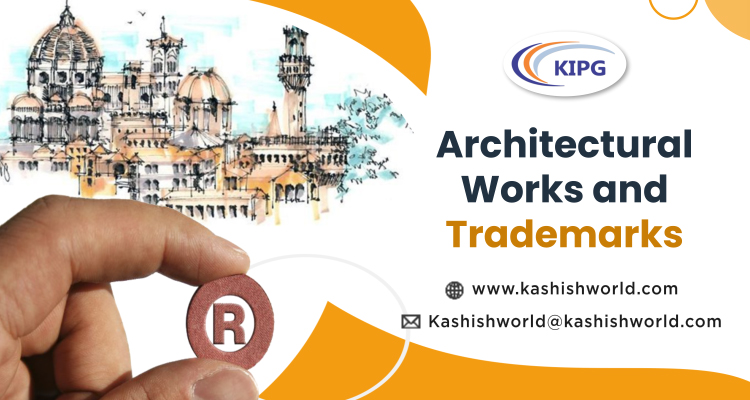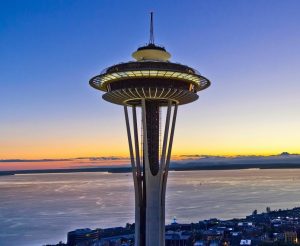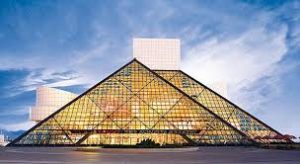
Architectural works are a true realization of creativity emerging from a blend of neatly drawn art and applied science. Intellectual Property (IP), in all its combined forms, is very crucial for the protection of architectural works to safeguard the financial and moral rights of the proprietor of such works. This article, however, primarily focuses on the aspect of Trademark Protection and the extent thereof, of which the proprietor, enforcers, and legal fraternity should be aware.
The Pivotal Role of Trademarks
Trademarks essentially serve to designate the origin of the goods and services that enable the consumers to distinguish between the like products sourced from different places. Thus, it is the goodwill associated with the mark that allows identification of the source of goods.
Trademarks can be deployed in the realm of architectural works to protect significant and iconic features of construction, provided the same should not form a part of the functional aspect of the construction. A feature is said to be functional in nature when “it is essential to the use or purpose of the article or affects the cost or quality of the article.” Furthermore, a trademark can be owned by an individual or an artificial being like a company, LLP, etc. Therefore, the identification of an originator or proprietor is quintessential.
It can protect the interiors and/or the exteriors of a building, including the layout of the place. Furthermore, any word, personal name, trade name, symbol, device, picture, design, numeral, monogram, abbreviation, acronym to slogan or phrase, or telephone number pertaining to that building can be protected as a trademark if it facilitates identification of the origin of the structure and is not a ‘word of the art.’ It is, however, essential to link the said logo of the architectural work with goods and services (or a set of goods/services). Where the proprietor has no goods or services to offer concerning the construction, it would not qualify for trademark protection on the sole basis of the creation of a creative symbol, logo, or trade name.
The examples mentioned below stand as established precedents when speaking of trademarks in architectural works:
- In the USA, the architectural design of the Rock & Roll Hall of Fame in New York was trademarked back in 1996. It enabled them to exclusively sell and deal with promotional materials embossing the building’s insignia.
- The Taj Mahal Palace Hotel, owned by the India Hotels Company Limited (IHCL) and located in Mumbai, became the first building to secure a Trademark Registration in India in 2017 under trademark class 43 (services for providing food and drink).

– Space Needle
- ESRT Empire State Building LLC has also secured trademark registration for the Empire State Building, as a result of which, it was successful in preventing Michael Liang, a Beer manufacturer, from registering the trademark logo that used the image of the said building as its logo to sell alcoholic beverages since it created confusion concerning the source of the goods as the Empire State Building had a gift shop selling liquor. (ESRT Empire State Building, LLC. vs. Michael Liang, the TTAB (2016)).
- The Space Needle in Seattle, a notable trademark, was trademarked in 1962 for a wide variety of goods and services.
- The famous Eiffel Tower itself is not a trademark; however, a trademark is held by the Société d’Exploitation de la Tour Eiffel for the lighting design of the tower. Therefore, it is not only structural aspects that can be protected.
- In 2013, Apple secured trademark registration for the architectural design and layout of its stores.

– Rock & Roll Hall of Fame and Museum
However, the reservation of a right in the form of a trademark won’t afford blanket protection for all kinds of use of such protected buildings. A well-known precedent was laid in the case of Rock and Roll Hall of Fame and Museum, Inc. vs. Gentile Productions, also pointed out as an example above. In this case, a photographer used the picture and name of the building alongside the photographer’s name on a poster without gaining official sponsorship. The court held that since there was no likelihood of confusion, the defendant’s adoption constituted fair use. In addition, to afford protection, the said work of architecture should have an established reputation or secondary meaning attached to it owing to its inherently distinctive features. In New York Racing Association Inc. vs. Perlmutter Publishing Inc, where the defendant used the horse racing scenes at the Saratoga Race Course for selling their t-shirts, the court held that the same did not infringe upon the trade-dress held by the plaintiff since the copied feature wasn’t inherently distinctive.
Extending into Trade Dress Protection
A design or interior/exterior decor of any construction may be safeguarded as a trade dress as well. It is nothing but an extension of a trademark involving the entire picture and impression of the construction consisting of different shapes contributing to its overall appearance, for instance, the decor, menu, floor plan, cutlery, uniform, façade, windows, doors, etc.
In Taco Cabana International, Inc. vs. Two Pesos, Inc., the court held that the plaintiff’s arrangement of a festive-like restaurant with celebratory decorations and the iconic color scheme constituted an enforceable trade dress since the same was inherently distinctive. Imitating a component of the trade dress of another is most likely not to consist of infringing use; however, where all the components of a trade dress are placed together, the same will attract the provisions of the law.
Rights of the Proprietor and the Freedom of Panorama
With trademark registration, the proprietor is equipped to exclusively use his trademark in connection with the goods and services mentioned in the application. Such use is extended to include the sale, the right to seek statuary remedy against infringing use, and the right to reproduce, assign, and alter the mark.
However, trademark protection is contemplated in the light of fair trade practices to prevent absolute monopoly, as noted above. The fair use of marks featuring architectural works like other marks is permissible. It connotes that the descriptive and nominative use of a mark by any individual other than the proprietor is permissible, for instance, use in the form of commentaries, parodies, news reporting, criticism, etc.
Many countries have extended trademark protection in the form of the ‘Freedom of Panorama.’ This doctrine states that no trademark is infringed where a photograph or video footage or painting (or art of the like nature) of a building or sculpture located in a public place is captured. This doctrine is specifically put to use in the European Union with varied forms of interpretation. For example, in Germany, it is adopted in the form of ‘Freedom of Streetscape,’ which means that third parties can make a pictorial representation of only those features of architectural works that are visible from the street. The same defense is also applied by Denmark, Sweden, and Finland. Some counties only extend such a defense to Copyright Protection for architectural works and not trademark protection.
Conclusion
The historical and modern manifestation of art in the form of buildings, monuments, and sculptures have enhanced the perception of creativity while not limiting them to their basic functional features of storing, sheltering, and safeguarding mankind and the untamed. It is where IP assumes prime importance since trademarks can be used to the benefit of the proprietor to exclusively utilize the symbols, drawings, features, or components of the construction. Trademarks do not protect the creativity of the construction, unlike the Copyright Law, but only help maintain the ethics of a fair marketplace by preventing the use of a mark associated with the proprietor, which would otherwise generate confusion amongst the masses as to the origin of the goods.

